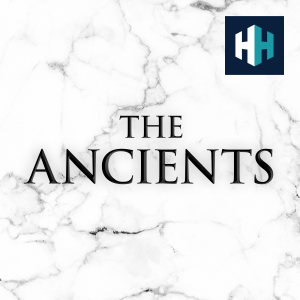
When we think of Pompeii, we remember the city which became frozen in time after a natural catastrophe. Well, in 1920, exactly 100 years ago, another 'frozen city' was rediscovered. This time it was Dura-Europos, and rather than falling victim to a volcano, this city was destroyed after a bloody siege in 256 AD. Whilst there is no historical record of life in the Hellenistic, Parthian and Roman border city and garrison, its remains have proven to be a rich source for archaeologists since the 1920s. Between the only complete example of the semi-cylindrical Roman legionary shield and the perfect oval shields with beautiful paintings of Greeks and Trojans or Greeks and Amazons; beyond the regimental records and complete horse armour and the Palmyrene Gate; archaeologists have uncovered the story of the city.
Tristan was joined on the podcast by Simon James from the University of Leicester, who talked through what we now know about life in Dura-Europa and the relationships between the Roman garrison, their dependents and the other inhabitants. He also offers a play-by-play of the battle which brought this city to a halt, and possibly one of the earliest examples of chemical warfare, all discovered through archaeology.
More Episodes
 2022-09-18
2022-09-18
 2022-09-15
2022-09-15
 2022-09-08
2022-09-08
 2022-09-08
2022-09-08
 2022-09-04
2022-09-04
 2022-09-01
2022-09-01
 2022-08-25
2022-08-25
 2022-08-21
2022-08-21
 2022-08-18
2022-08-18
 2022-08-14
2022-08-14
 2022-08-11
2022-08-11
 2022-07-31
2022-07-31
 2022-07-28
2022-07-28
 2022-07-24
2022-07-24
 2022-07-21
2022-07-21
 2022-07-17
2022-07-17
 2022-07-14
2022-07-14
Create your
podcast in
minutes
- Full-featured podcast site
- Unlimited storage and bandwidth
- Comprehensive podcast stats
- Distribute to Apple Podcasts, Spotify, and more
- Make money with your podcast
It is Free
- Privacy Policy
- Cookie Policy
- Terms of Use
- Consent Preferences
- Copyright © 2015-2024 Podbean.com






